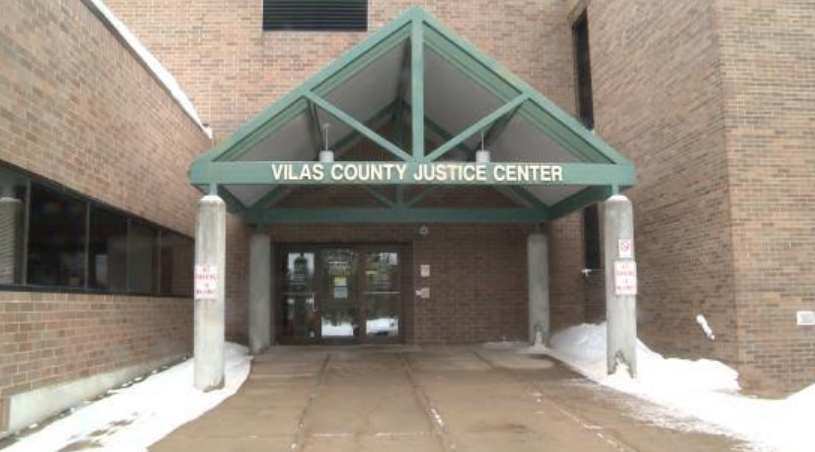
- Details
- By Darren Thompson
EAGLE RIVER, Wis. — A Lac du Flambeau woman recently died at the Vilas County Jail, according to the Vilas County Sheriff’s Office. Donna Christensen, 20, was discovered deceased by Vilas County Correctional Officers last night, before mandatory lockdown at 11 p.m.
She allegedly hung herself.
“We spoke last night around 5 p.m. and she was fine,” said Paula Christensen, mother of Donna. “She was asking me to send her some money for canteen tomorrow.
Paula was called late last night, before midnight, by the Vilas County Jail and informed that her daughter was found deceased in her cell. During the time of the phone call (around 5 p.m.) and late last night, Paula’s daughter was placed on discipline from a sergeant who has often been reported to target American Indian inmates.
“I don’t know what happened,” said Christensen. “There was no indication that she was going to harm herself.”

Her death is a stark reminder that multiple Lac du Flambeau tribal members have died over the years while inmates at the Vilas County Jail in Eagle River, Wis.
“Why is it only Anishinaabe people who die at the Vilas County Jail?” Lac du Flambeau Tribal Council Member Charles “Gus” Theobald Jr. told Native News Online. “It’s always our (Lac du Flambeau) young people.”
The Lac du Flambeau Indian Reservation is 36 miles—a 45-minute drive in the Northwoods of Wisconsin—from the Vilas County Jail. Because Wisconsin is a mandatory Public Law 280 State, civil and criminal jurisdiction belong to the state and the majority of the reservation is in Vilas County. As of the 2010 census, the population of Vilas County was 21,430.
The Vilas County Jail was built to house 120 inmates, according to the Vilas County Sheriff’s Department website, but routinely houses a disproportionate number of inmates from Lac du Flambeau.
According to the Lac du Flambeau Tribal Council, there are approximately 1,200 tribal members living on the reservation making approximately 5 percent of Vilas County American Indians, but the Vilas County Jail is regularly full of Lac du Flambeau tribal members. As of press time, approximately 50% of the inmates at the Vilas County Jail are Lac du Flambeau tribal members.
“At times, the percentage of inmates at the Vilas County Jail who are from Lac du Flambeau get as high as 75 percent,” said Lac du Flambeau Tribal Council Member Brittney Allen.
The Lac du Flambeau Tribal Government, including its enterprises, is the largest employer in Vilas County, employing approximately 800 people, according to the Wisconsin Department of Workforce Development.
In the United States, American Indians are disproportionately more likely to be incarcerated than other groups of people. According to the Bureau of Justice Statistics, American Indians are incarcerated at a rate 38 percent higher than the national average.
Between 1999 and 2014, the percentage of American Indian and Alaska Native jail inmates in U.S. jails nearly doubled, according to the Bureau of Justice Statistics.
Nationally, American Indians make up approximately 2 percent of the population, according to the U.S. Census. In 2014, the last year for which data is available, 3.1 percent of U.S. jail deaths involved American Indians, Alaska Natives, Asians, Native Hawaiians, other Pacific Islanders and people identifying as two or more races.
Although the data shows that the Vilas County Jail has disproportionate numbers of Lac du Flambeau tribal members and the community often cites over-policing by the Lac du Flambeau Tribal Police Department, a former Lac du Flambeau police officer gives another perspective.
“There is a common belief that the Lac du Flambeau Tribal Police targets tribal members,” said Daniel Thompson, a former Lac du Flambeau Tribal Police officer and enrolled tribal member. “That’s not true.”
“The reason the numbers are higher is because in the entire county, there are only two townships that have dedicated police forces, Lac du Flambeau and Eagle River,” added Thompson. “Those are the two townships that have the most inmates in jail.”
The Vilas County Sheriff’s Department has not released a public statement on the issue.
However, the Lac du Flambeau Band of Lake Superior Chippewa Indians is investigating the matter and voiced that many in the community are deeply saddened by the loss of another young person.
More Stories Like This
Native News Weekly (August 25, 2024): D.C. BriefsUS Presidents in Their Own Words Concerning American Indians
Two West Virginia Guardsmen Shot Near White House
Next on Native Bidaské: Chef Sean Sherman Talks “Turtle Island” and the Future of Indigenous Food
Deer Camp: A Family Tradition That Runs Deep
Help us tell the stories that could save Native languages and food traditions
At a critical moment for Indian Country, Native News Online is embarking on our most ambitious reporting project yet: "Cultivating Culture," a three-year investigation into two forces shaping Native community survival—food sovereignty and language revitalization.
The devastating impact of COVID-19 accelerated the loss of Native elders and with them, irreplaceable cultural knowledge. Yet across tribal communities, innovative leaders are fighting back, reclaiming traditional food systems and breathing new life into Native languages. These aren't just cultural preservation efforts—they're powerful pathways to community health, healing, and resilience.
Our dedicated reporting team will spend three years documenting these stories through on-the-ground reporting in 18 tribal communities, producing over 200 in-depth stories, 18 podcast episodes, and multimedia content that amplifies Indigenous voices. We'll show policymakers, funders, and allies how cultural restoration directly impacts physical and mental wellness while celebrating successful models of sovereignty and self-determination.
This isn't corporate media parachuting into Indian Country for a quick story. This is sustained, relationship-based journalism by Native reporters who understand these communities. It's "Warrior Journalism"—fearless reporting that serves the 5.5 million readers who depend on us for news that mainstream media often ignores.
We need your help right now. While we've secured partial funding, we're still $450,000 short of our three-year budget. Our immediate goal is $25,000 this month to keep this critical work moving forward—funding reporter salaries, travel to remote communities, photography, and the deep reporting these stories deserve.
Every dollar directly supports Indigenous journalists telling Indigenous stories. Whether it's $5 or $50, your contribution ensures these vital narratives of resilience, innovation, and hope don't disappear into silence.
 The stakes couldn't be higher. Native languages are being lost at an alarming rate. Food insecurity plagues many tribal communities. But solutions are emerging, and these stories need to be told.
The stakes couldn't be higher. Native languages are being lost at an alarming rate. Food insecurity plagues many tribal communities. But solutions are emerging, and these stories need to be told.
Support independent Native journalism. Fund the stories that matter.
Levi Rickert (Potawatomi), Editor & Publisher
